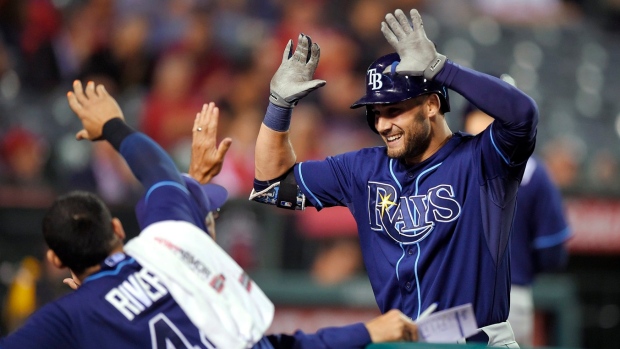Mar 21, 2017
Anderson, Kiermaier signings show new value trend
Young, versatile position players are becoming increasingly more valuable across baseball compared to established veteran power hitters.
, TSN.ca Staff

Last year, Chris Carter hit 41 home runs in a contract year for the Milwaukee Brewers, tied for the most in the National League with Nolan Arenado. His reward? A one-year, $3.5 million deal with the New York Yankees to play a part-time first base/designated hitter role behind Greg Bird and Matt Holliday.
Pedro Alvarez hit 22 home runs in 337 at-bats (Jose Bautista had 22 in 423) with an OPS of .826 (Bautista .817) and was compensated with a one-year minor league deal in the middle of March.
By comparison, Tim Anderson, the 23-year-old shortstop for the Chicago White Sox who has only 99 games of big league-service time, was handed a six-year, $25 million extension Tuesday. Last year, he had nine home runs, 30 RBIs and an OPS of .738.
Centrefielder Kevin Kiermaier, 26, got paid too (12 home runs, 37 RBIs and a .741 OPS last year). His deal was for six years as well, but will pay him $53.5 million.
The difference is, both Anderson and Kiermaier are young, athletic and play key positions, despite not being stars at the plate. However, given their age and athleticism, it’s reasonable to expect an improvement. Both are also solid defensively and both use speed as a part of their game.
Some other players that got larger deals than expected are speedy outfielder Dexter Fowler (five years, $82.5 million) and versatile infielder and outfielder Ian Desmond (five years, $70 million) also fit the bill of the types of players on the rise.
Defence, speed and versatility are becoming more valuable than power at the plate. With strikeout numbers up and home runs down across baseball compared to other eras, relying on the long-ball is getting more and more inefficient.
Players that exclusively occupy first base and DH positions also hamper managers’ ability to construct a lineup and give players days off. Part of that may explain the lack of a market this winter for high-profile free agent power hitters like Edwin Encarnacion, Mike Napoli, Mark Trumbo, along with Alvarez and Carter.
Some of this might have to do with an over-saturated 1B/DH market in free agency, but this winter’s spending appears to be indicative of a new trend away from veteran power, and toward longevity, athleticism and versatility.



